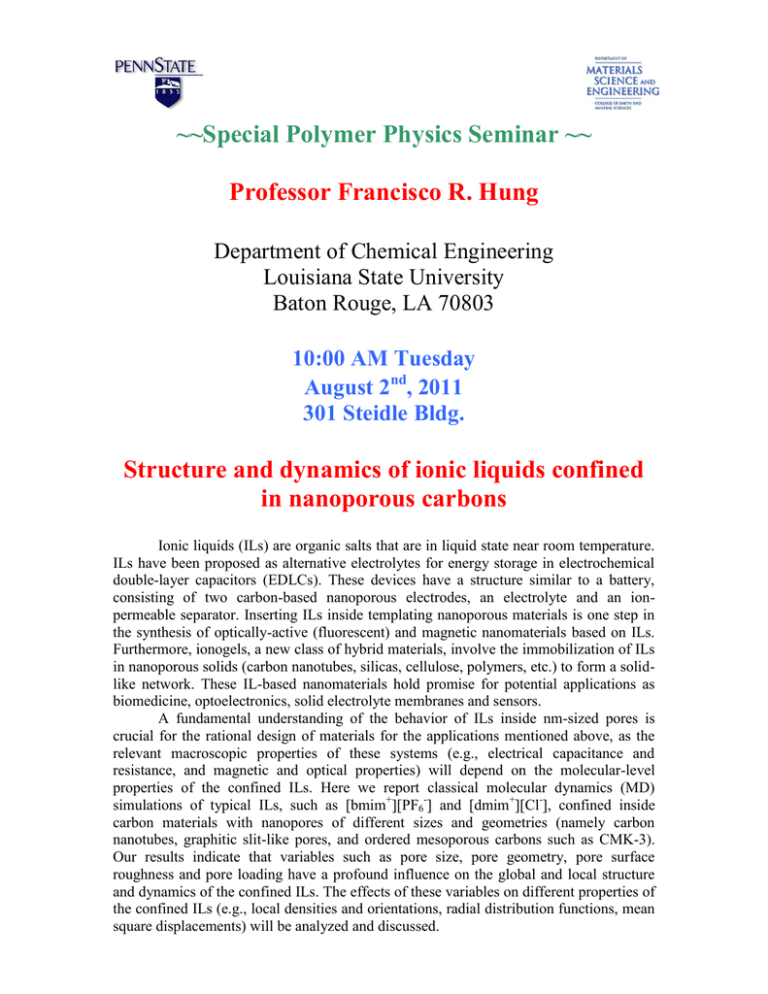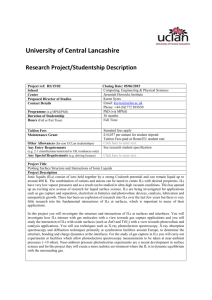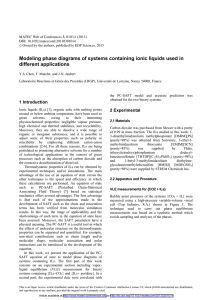~~Special Polymer Physics Seminar ~~ Professor Francisco R. Hung
advertisement

~~Special Polymer Physics Seminar ~~ Professor Francisco R. Hung Department of Chemical Engineering Louisiana State University Baton Rouge, LA 70803 10:00 AM Tuesday August 2nd, 2011 301 Steidle Bldg. Structure and dynamics of ionic liquids confined in nanoporous carbons Ionic liquids (ILs) are organic salts that are in liquid state near room temperature. ILs have been proposed as alternative electrolytes for energy storage in electrochemical double-layer capacitors (EDLCs). These devices have a structure similar to a battery, consisting of two carbon-based nanoporous electrodes, an electrolyte and an ionpermeable separator. Inserting ILs inside templating nanoporous materials is one step in the synthesis of optically-active (fluorescent) and magnetic nanomaterials based on ILs. Furthermore, ionogels, a new class of hybrid materials, involve the immobilization of ILs in nanoporous solids (carbon nanotubes, silicas, cellulose, polymers, etc.) to form a solidlike network. These IL-based nanomaterials hold promise for potential applications as biomedicine, optoelectronics, solid electrolyte membranes and sensors. A fundamental understanding of the behavior of ILs inside nm-sized pores is crucial for the rational design of materials for the applications mentioned above, as the relevant macroscopic properties of these systems (e.g., electrical capacitance and resistance, and magnetic and optical properties) will depend on the molecular-level properties of the confined ILs. Here we report classical molecular dynamics (MD) simulations of typical ILs, such as [bmim+][PF6-] and [dmim+][Cl-], confined inside carbon materials with nanopores of different sizes and geometries (namely carbon nanotubes, graphitic slit-like pores, and ordered mesoporous carbons such as CMK-3). Our results indicate that variables such as pore size, pore geometry, pore surface roughness and pore loading have a profound influence on the global and local structure and dynamics of the confined ILs. The effects of these variables on different properties of the confined ILs (e.g., local densities and orientations, radial distribution functions, mean square displacements) will be analyzed and discussed.





